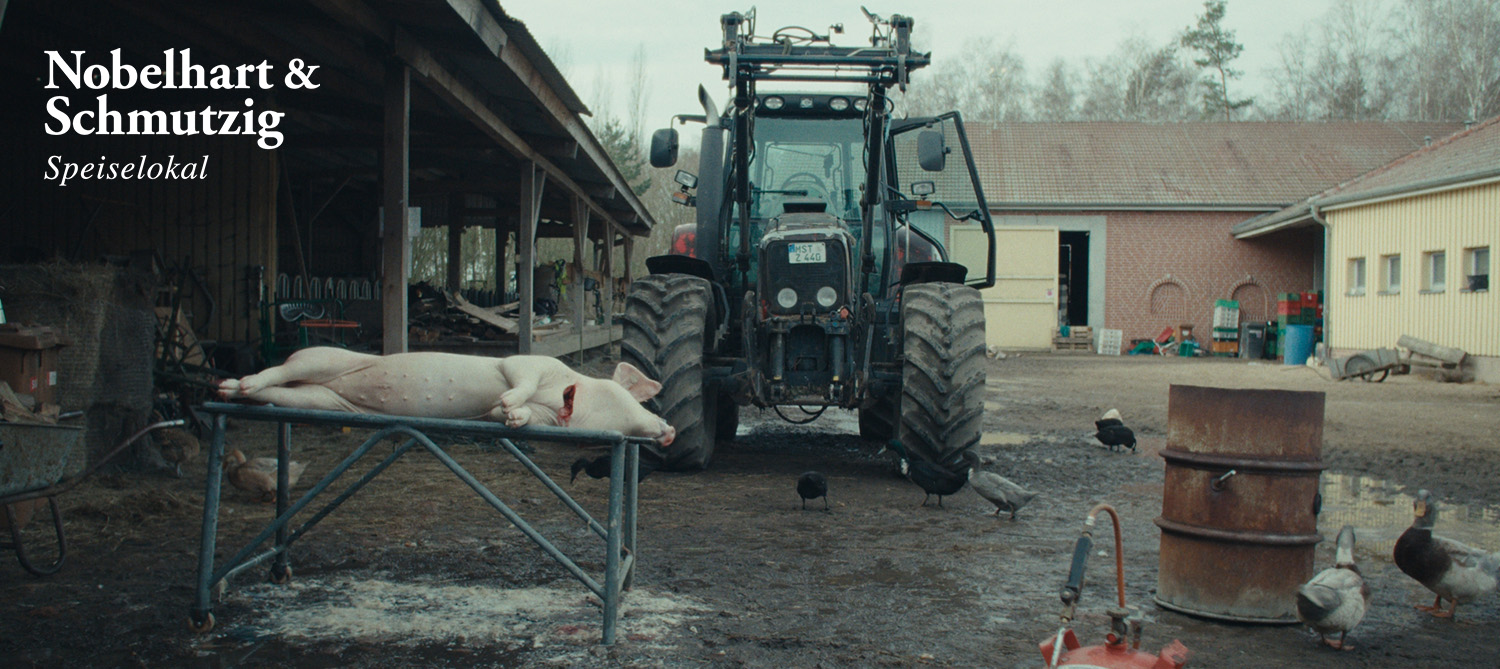Exhibition: Erdhof by Pujan Shakupa and Stefan Stark

This video exhibition details life on the Erdhof Seewalde over the course of a whole year. It is based on a documentary by the artists Pujan Shakupa and Stefan Stark, which depicts all facets of life on the Erdhof, from toiling the fields to milking the cows and cleaning the chicken shed.
And it depicts death, too, namely the slaughter of a pig named Kalle.
Some thoughts on this:
Pig Kalle, like all Husum saddle pigs bred by David Peacock and Viola Garnetzke, spent his entire life on the Erdhof, enjoying ample opportunity to frolic in the meadows, feasting on feed obtained in circular economy. Even the slaughter itself took place on the farm – in an environment that is familiar to the animals, sparing them the hardships of transport and the stress of the abattoir.
Of course, restaurants such as ours love to boast endlessly about this sort of bucolic idyll and the exemplary quality of life enjoyed by the animals whose meat we serve. At the same time, we routinely shield you from their deaths. But it is an undeniable fact that before the steak comes the stun gun, and this is something we rather tend to leave out.
But why, actually? And who actually benefits from this alienation between city dwellers and their food, an alienation we usually help to sustain?
Consumers certainly do not benefit from it. Nor does averting our gaze do anything to help the animals. On the contrary: looking away only benefits industrial food producers who treat humans, animals and the environment without respect. In fact, industrial agriculture relies on you to look away.
And that is precisely why we invite you to take a closer look. Not just at the juicy piece of meat on your plate, but at everything that comes before it.
Your Nobelharts
Exhibition: Erdhof by Pujan Shakupa and Stefan Stark

And it depicts death, too, namely the slaughter of a pig named Kalle.
Some thoughts on this:
Pig Kalle, like all Husum saddle pigs bred by David Peacock and Viola Garnetzke, spent his entire life on the Erdhof, enjoying ample opportunity to frolic in the meadows, feasting on feed obtained in circular economy. Even the slaughter itself took place on the farm – in an environment that is familiar to the animals, sparing them the hardships of transport and the stress of the abattoir.
Of course, restaurants such as ours love to boast endlessly about this sort of bucolic idyll and the exemplary quality of life enjoyed by the animals whose meat we serve. At the same time, we routinely shield you from their deaths. But it is an undeniable fact that before the steak comes the stun gun, and this is something we rather tend to leave out.
But why, actually? And who actually benefits from this alienation between city dwellers and their food, an alienation we usually help to sustain?
Consumers certainly do not benefit from it. Nor does averting our gaze do anything to help the animals. On the contrary: looking away only benefits industrial food producers who treat humans, animals and the environment without respect. In fact, industrial agriculture relies on you to look away.
And that is precisely why we invite you to take a closer look. Not just at the juicy piece of meat on your plate, but at everything that comes before it.
Your Nobelharts
